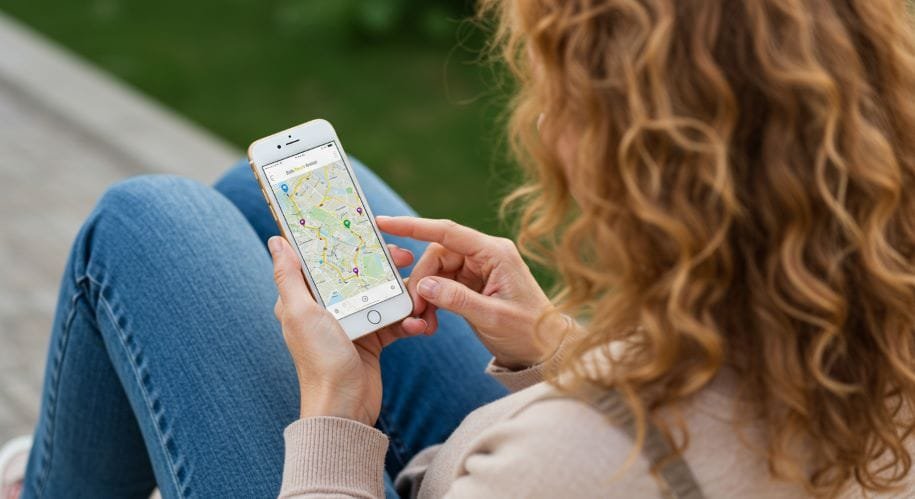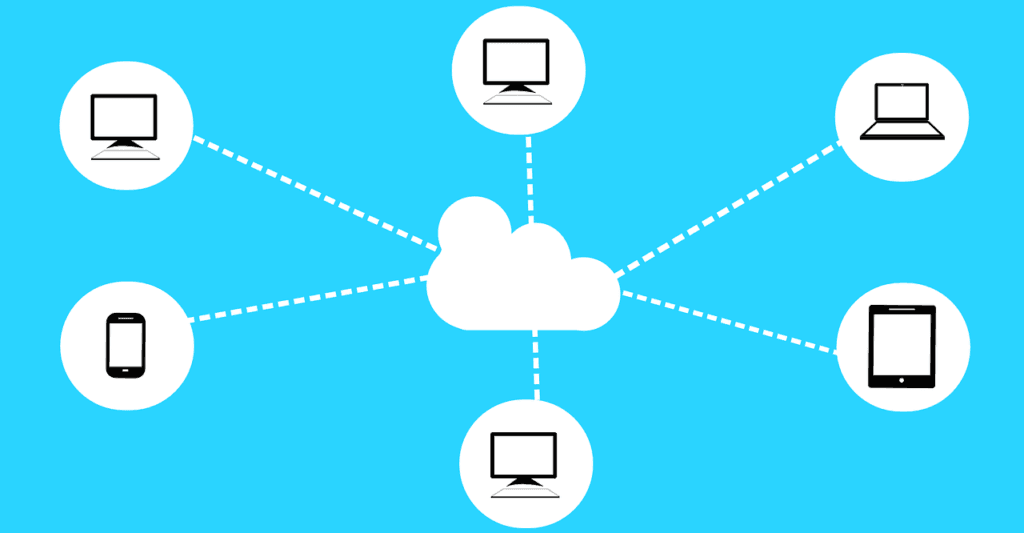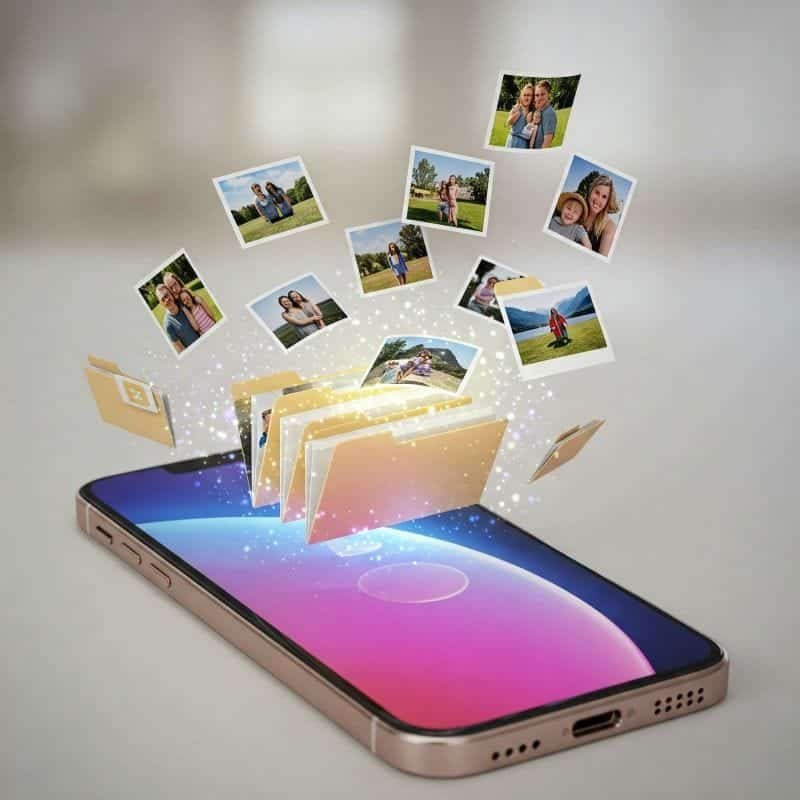Remember when it was called “Find My iPhone”? Believe it or not Apple change the name in 2019 when they combined “Find My iPhone” and “Find My Friends” giving it a new name—“Find My”.
These days, it’s grown into an all-in-one tool for locating iPhones, iPads, Macs, Apple Watches, AirPods and even AirTags, as well as sharing locations with friends and family.
But as the service has evolved, so have the rumors and concerns. Some revolve around privacy and data collection, others about stalking and device security. Let’s walk through a few major points of controversy and clear up some lingering myths.
Myths About Find My
Let’s begin by looking at some common myths about the Find My app (formally Find My iPhone).
Myth #1. Track an iPhone That’s Turned Off
The first common misconception is that Find My can pinpoint an iPhone even when it’s completely powered down. In reality, once the battery dies or the device shuts off, the device can no longer be track in real time. Although you can still see its last known location. That can be helpful when looking for a lost device.

Newer iPhones can send a brief Bluetooth signal when they’re in low power mode, but that’s not the same as continuous, real-time tracking. If you see claims that you can follow a phone around 24/7 after it’s turned off, that’s simply not accurate.
Myth #2. A Factory Reset Bypasses Find My
Another myth suggests that a thief can just erase your phone and set it up as new. When you setup a new device and turn on Find My it automatically enables something called Activation Lock.
Activation lock ties your device to your Apple ID. When a factory reset is performed and then reactivated it contacts Apple to see if Activation Lock is turned on. Your Apple ID password is required to remove Activation Lock from your device, which is why it’s so important to turn on Find My in the first place.

Keeping your password secure is paramount. If you forget your own Apple ID password, it can be a hassle to reset. iOS 18 has a new options called, Recovery Contact and Recovery Key. A “Recovery Contact” is a trusted person you designate to help you regain access to your online account if you lose your password, while a “Recovery Key” is a unique code generated by the system that can be used independently to reset your password and access your account.
To setup Recovery Contact or Recover Key go to Settings > Tap on [your Name] at the top>Sign-In & Security.
Another way to protect your device is to enable “Stolen Device Protection”. If your iPhone is stolen, a security delay in activated on your device if it’s away from a familiar location such as Home or Work. This gives you time to use Find My to mark as Lost which will secure the device from being reset.
To setup Stolen Device Protection go to Settings > Privacy & Security and scroll to the bottom of the screen.
If your iPhone is lost or stolen, knowing what to do is so important. You”ll want to read my post : What to do when your iPhone is lost and download my checklist so you’re not caught off guard.
For more info about iOS18 check out my post, iOS18: What You Need to Know Before You Update
Myth #3. It’s Only Useful for Finding Missing iPhones
Finally, there’s a misconception that Find My (or “Find My iPhone”) is solely about lost or stolen devices.
Yes, Find My is great for lost or stolen devices but there’s more to it. Beside just playing a sound to help you located your phone in your own house, you can also mark the device as “Lost”. This allows you to enter a message providing contact info which displays on the screen. This could ultimately help you get it back. You can also remotely erase your device if needed. And don’t worry, even if you erase the device the message you entered still display after the device is erased.
So, along with locating devices, Find My is actually handy for everyday scenarios like checking if your friend or family member made it home safely, organizing a group meetup, or using AirTags to locate your keys. Most versions of AirPods, can even play a loud sound to help find them when they’ve slipped between couch cushions.

Find My is integrated with iCloud which can be helpful if you only have 1 device. To learn more about how iCloud can be used you may want to read my post, How To Make iCloud Work For You.
Controversies About Find My
Now that we’ve debunked some of the myths around Find My, let’s look a some of the controversies surrounding it.
Controversy #1. Unauthorized Tracking

Ever since Apple introduced AirTags into the Find My ecosystem, people have voiced concerns about someone slipping a tracker into a bag or car to follow them around.
Apple has added safeguards to address these issue. If you have iOS 17.5 or later tracking notifications will display if an unknown AirTag travels with you for a while, and a chirping sound from the AirTag after it’s separated from its owner. However, no system is perfect, and Android users have to install Apple’s “Tracker Detect” app to receive those alerts. It’s a step in the right direction, but critics argue more could be done to prevent misuse.
Controversy #2. Privacy Concerns

One of the biggest controversies around Find My involves privacy. Some users worry Apple might store location data indefinitely or track them without explicit consent.
In theory, Apple only pulls your location when you request it, and everything is encrypted. If you prefer not to share your whereabouts, you can switch off “Share My Location” or disable Find My entirely in Settings. Of course, that means you’ll lose the ability to locate your phone if it goes missing. The trade-off is yours to decide.
If you are concerned about privacy when using Apple Pay, you’ll want to read my post, Apple Pay Safe, Simple & Convenient: Is It Right For You?
Controversy #3. Data Collection Overreach

Some critics point to Apple’s broader ecosystem iPhones, Macs, AirTags, and more. They worry the company might be gathering too much personal data. Apple counters that your location data is anonymized and not sold to third parties. It also emphasizes that everything is end-to-end encrypted. That means you data can not read by anyone except the intended receiver.
While Apple’s privacy stance is often stricter than other tech giants, trust is a personal choice. If you’re uncomfortable, you can limit how often you use these features or keep them off by default.
Final Thoughts
Balancing Convenience and Caution
Whether you still call it “Find My iPhone” or you’ve moved on to the official “Find My” branding, Apple’s location-tracking service can be a real lifesaver—especially if your device goes missing or you want to keep tabs on a family member. Yet there’s no denying the controversies around privacy, stalking, and data collection. Apple has built-in features like Activation Lock and unknown device alerts to address those worries, but staying informed is key.
If you’re comfortable with Apple’s approach and you manage your location-sharing wisely, Find My offers a ton of convenience. If you’re still concerned, you can always adjust your settings or switch it off entirely. The important thing is that you understand the facts behind the myths, so you can make a decision that works best for you.
For more information about personal safety and Apple products check out Apple Personal Safety User Guide.
I hope you found this post helpful. Let me know what you think by leaving me a comment below or sending me an email.
Follow me on Facebook so you never miss a new post or sign up for my newsletter.
Updated July 2025: This post now includes a link to my Lost iPhone checklist for what to do right away if your device goes missing.

Gail Kerr
IT Professional and Technical WriterTechnology has been a part of my life for as long as I can remember. I have over 27 years of experience providing computer support in large corporations and small businesses. I went back to school in 2009 to get an Associate Certificate in Technical Writing so I could take my love of tech and become proficient at writing clear and easy to understand documents for people of all levels. I’ve become the go to person for family and friends whenever they have tech questions or challenges.









